Essays
Essays

Forlaget Emancipa(t/ss)ionsfrugten
Great is the Power of the Name
Signe Frederiksen, Anne-Mette Schultz
Great is the Power of the Name considers the works of authors Elena Ferrante, Pauline Reáge, Karl Ove Knausgård, Colette and artist Lee Lozano.
In 2016, when Anne-Mette had invited Signe to take on the role as editor of her text The Institute of Applied Speech, they both began reading Elena Ferrante's The Neapolitan Novels. They were specifically fascinated by the author’s use of pseudonym. Anne-Mette's Institute of Applied Speech was a tale of a fictive place, a pseudo-topos, and Elena Ferrante’s ideas about the pseudonym as a space for the writing itself was useful in thinking about fictive authorship. In a number of written interviews, Elena Ferrante unfolds the feminist perspective of her use of pseudonym. They were attracted by the idea that the author could avoid the biographical question; that she could disappear behind her own writing.
To them, the artist Lee Lozano is the ghostly presence of hard-core moralist and humorous fuck-off art from another decade. During the course of her life, Lozano continuously reconfigured and gradually dissolved her own name, starting from Leonore Knaster ending up with E. Her work Boycott Women, in which she decides not to have any contact with women, expands the notion of feminist critique.
Great is the Power of the Name publishes a readership interested in the position of the artist, and how it conditions the way we make art.

Gaia And Philosophy
In the 1970s, microbiologist Lynn Margulis and atmospheric chemist James Lovelock developed the Gaia theory. Embracing the circular logic of life and engineering systems, the Gaia theory states that Earth is a self-regulating complex system in which life interacts with and eventually becomes its own environment.
Gaia describes a living Earth: a body in the form of a planet. For billions of years, life has created an environment conducive to its continuation, influencing the physical attributes of Earth on a planetary scale. An idea with precedents in natural science and philosophy for millennia, Gaia resonates with the ancient magico-religious understanding that all is one: as above, so below.
Fusing science, mathematics, philosophy, ecology and mythology, Gaia and Philosophy, with a new introduction by Dorion Sagan, challenges Western anthropocentrism to propose a symbiotic planet. In its striking philosophical conclusion, the revolutionary Gaia paradigm holds important implications not only for understanding life's past but for shaping its future.
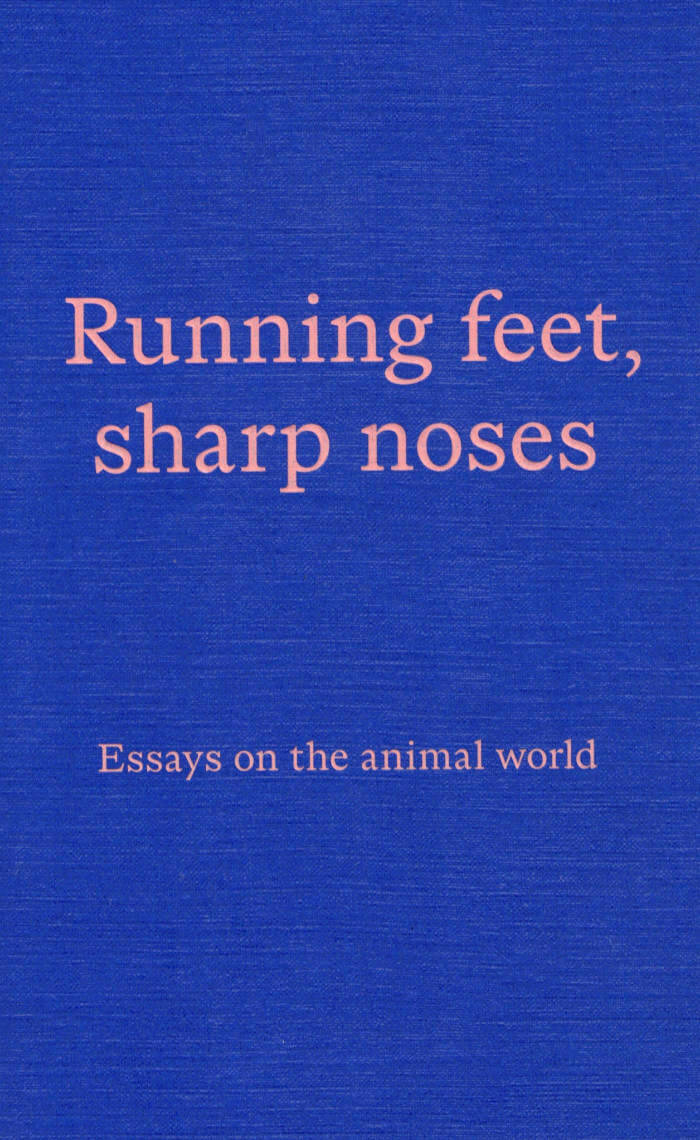
Running feet, sharp noses
and Niamh Dunphy, Adrian Duncan and 1 more
Edited by Nathan O’Donnell, Adrian Duncan, and Niamh Dunphy, Running feet, sharp noses: Essays on the animal world is a collection of essays on the animal world. Each piece is a meditation on how animals affect our sense of self, our memories, our actions.
With contributions by Latifa Akay, Sara Baume, John Berger, June Caldwell, Niamh Campbell, Vona Groarke, Edward Hoagland, Sabrina Mandanici, Darragh McCausland, Tim MacGabhann, Honor Moore, Eileen Myles, Stephen Sexton, Jessica Traynor, Erica Van Horn, and Suzanne Walsh.

The Poetics of Wrongness
In her first book of critical non-fiction, The Poetics of Wrongness, poet Rachel Zucker explores wrongness as a foundational orientation of opposition and provocation.
Devastating in their revelations, yet hopeful in their commitment to perseverance, these lecture-essays of protest and reckoning resist the notion of being wrong as a stopping point on the road to being right, and insist on wrongness as an analytical lens and way of reading, writing, and living that might create openness, connection, humility, and engagement.
This book marks a turning point in Zucker's significant body of work, documenting her embrace of the multivocality of interview in her podcasting, and resisting the univocality of the lecture as a form of wrongness in and of itself.

Houses To Die In and Other Essays on Art
Art critical essays focusing on artworks that, in various ways, convey a sense of unheroic "trouble."
Stories of the undead of contemporary painting, the mediation of pain, photography courting stupidity, sculpture and architecture courting animism, populism in avant-garde art, fear of avant-garde territorialism, ambivalent networking, displaced abstractions and misplaced weather systems.
The essays assembled in this volume were all written over the past twenty years—a period in which Ina Blom pursued art critical writing alongside more academic work and when the boundaries between the two genres grew at times deliberately blurred. Dispersed as they were across a variety of publications with limited accessibility—out-of-print anthologies and artist's books, hard-to-find art catalogues, journals, and magazines protected by paywalls—Houses To Die In and Other Essays on Art at last brings them together, and not just for practical reasons. If the texts collected here have one thing in common, it is in a certain pull they display toward artistic projects that are not redemptive or exemplary, but which instead convey a sense of trouble: trouble actively sought by the artists or keenly felt by Blom. A distinctly unheroic trouble.
Born in Oslo in 1961, Ina Blom is an Associate Professor at the Department of Philosophy, Classics, History of Art and Ideas at the University of Oslo. She has written extensively on modern and contemporary art and is also active as an art critic.

Against Ageism: A Queer Manifesto
Age! What is it good for? Absolutely nothing! (Apart from greasing the wheels of capitalist reproduction.) In this queer manifesto, Simon(e) van Saarloos weaves a wealth of militant sex-liberationist, afrofuturist, transfeminist and decolonial imaginaries into their anti-ageist sails, charting a confident course across contemporary society’s generational hang-ups as well as visiting, in some more personal moments, their own.
-Sophie Lewis, author of Abolish the Family: A Manifesto for Care and Liberation and Full Surrogacy Now: Feminism Against Family
Against Ageism: A Queer Manifesto starts with what it is not: it is not a socio-economic argument against ageism, celebrating “the elderly” as economically viable. Author Simon(e) van Saarloos is not interested in natural arguments about age, which portray different age groups as valuable because of assumed inherent qualities. Instead, this manifesto starts with an experience of childhood sexual abuse, and moves on to dissect the ways in which constructions of “age” and “youth” function to support and reproduce white supremacist patriarchy. The book includes two reproductions of works by painter Samantha Nye.
Simon(e) van Saarloos is the author of Take ‘em Down (Publication Studio Guelph) and Playing Monogamy (Publication Studio Rotterdam). They were the curator of the 2021 exhibition on Abundance (“We must bring about the end of the world as we know it” – Denise Ferreira da Silva) in Het HEM and are also the host of *The Asterisk Conversations podcast. Van Saarloos is currently a PhD candidate in the Rhetoric department at UC Berkeley.

Copiez ce livre – Un manuel sur le droit d'auteur et les communs culturels, par et pour les artistes
An artist's guide to copyright, written for makers.
Both practical and critical, this book will guide you through the concepts underlying copyright and how they apply in your practice.
How do you get copyright? For what work? And for how long? How does copyright move across mediums, and how can you go about integrating the work of others? Because they get copyright too!
Copy this Book will detail the concepts of authorship and original creation that underlie our legal system. This way, it will equip you with the conceptual keys to participate in the debate on intellectual property today.
Eric Schrijver is a Dutch interaction designer, artist and author, born in Amsterdam in 1984. He lives in Brussels, and works for the Belgian IT company ACSONE, designing and developing interfaces for clients in the public and private sector. Eric Schrijver directs a group blog called I like tight pants and mathematics, that aims to motivate designers and artists to get more involved in the world of computer programmers. From 2011 to 2017 he was a core member of the graphic design collective Open Source Publishing. Eric Schrijver has taught workshops at art schools around the world. He has been a teacher at the Masters Graphic Design at the École de Recherche Graphique (ERG), and as well as a faculty member at KABK (The Hague), where he taught coding and interaction design.

Pidginization as Curatorial Method – Messing with Languages and Praxes of Curating
Bonaventure Soh Bejeng Ndikung
In this compelling rethinking of curatorial practice, renowned museum director, curator, and writer Bonaventure Soh Bejeng Ndikung proposes that Pidgin languages and pidginization as a mode of being and doing offer a decolonialized reinvention of communicative practices—a space in which the boundaries between disciplines of knowledge collapse and sociopolitical, economic, ethical, and spiritual concepts and questions are renegotiated.
Written as a series of powerful anecdotes, the book grounds its provocative ideas in personal, cultural, and political histories of challenge and improvisation, and argues, as Ndikung writes, that "pidginized curating is a curating that combines works, ideas, practices, and languages in resistance to canonical conventions, cultural stasis, ossified practices, dead rhythms, and singular forms."
Bonaventure Soh Bejeng Ndikung (born 1977 in Yaoundé, Cameroon, lives and works in Berlin) is an independent art curator, art critic, author and biotechnologist. He is founder and artistic director of SAVVY Contemporary Berlin and editor-in-chief of SAVVY Journal for critical texts on contemporary African art. He was associate professor at Muthesius University Kiel, and is currently guest professor in curatorial studies at the Städelschule in Frankfurt. He was curator-at-large for documenta 14, and was a guest curator of the 2018 Dak'Art Biennale in Senegal. As part of the Miracle Workers Collective, he curated the Finnish Pavilion at the Venice Biennale in 2019.

King Kong Theory (Uk edition)
Powerful, provocative and personal, King Kong Theory is a candid account of how the author of Baise-moi came to be Virginie Despentes. Drawing from personal experience, Despentes shatters received ideas about rape and prostitution, and explodes common attitudes towards sex and gender. King Kong Theory is a manifesto for a new punk feminism, reissued here in a brilliant new translation by Frank Wynne.
‘I write from the realms of the ugly, for the ugly, the frigid, the unfucked and the unfuckables, all those excluded from the great meat market of female flesh, and for all those guys who don’t want to be protectors, for those who would like to be but don’t know how, for those who are not ambitious, competitive, or well-endowed. Because this ideal of the seductive white woman constantly being waved under our noses – well, I’m pretty sure it doesn’t exist.’
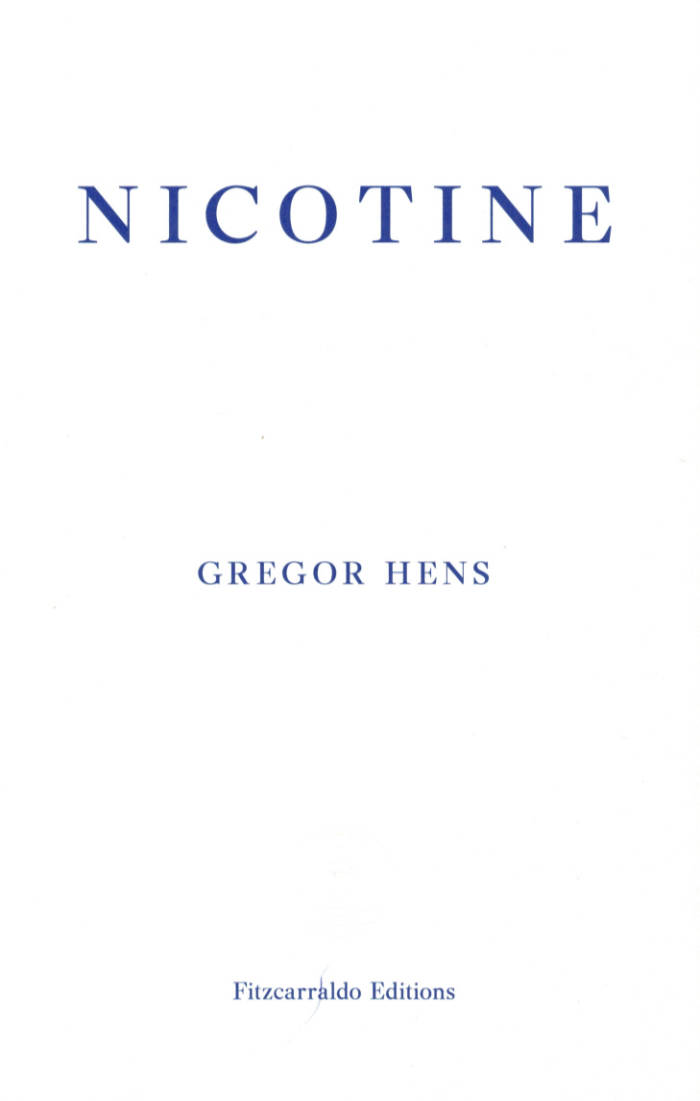
Nicotine
The translation of this work was supported by a grant from the Goethe-Institut which is funded by the German Ministry of Foreign Affairs
Written with the passion of an obsessive, Nicotine addresses a life of addiction, from the epiphany of the first drag to the perennial last last cigarette. Reflecting on his experiences as a smoker from a young age, Gregor Hens investigates the irreversible effects of nicotine on thought and patterns of behaviours. He extends the conversation with other smokers to meditations on Mark Twain and Italo Svevo, the nature of habit, the validity of hypnosis, and the most insignificant city in the United States, where he lived for far too long. With comic insight and meticulous precision, Hens deconstructs every facet of the dependency and offers a brilliant disquisition on the psychopathology of addiction.
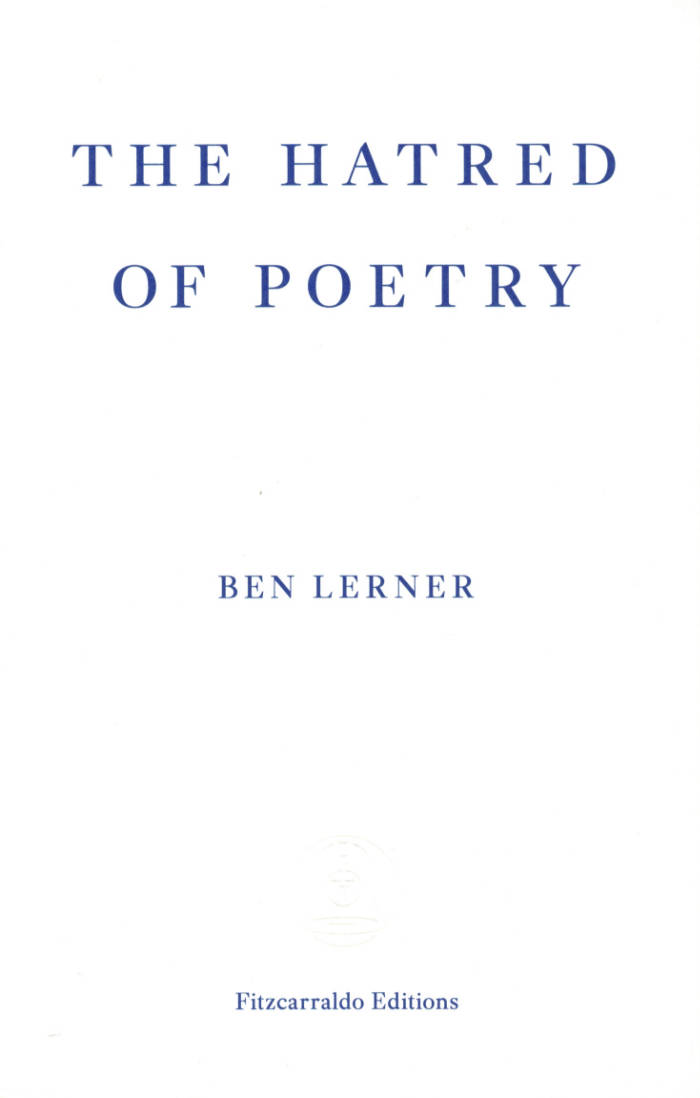
The Hatred Of Poetry
No art has been denounced as often as poetry. It’s even bemoaned by poets: ‘I, too, dislike it,’ wrote Marianne Moore. ‘Many more people agree they hate poetry,’ Ben Lerner writes, ‘than can agree what poetry is. I, too, dislike it and have largely organized my life around it and do not experience that as a contradiction because poetry and the hatred of poetry are inextricable in ways it is my purpose to explore.’
In this inventive and lucid essay, Lerner takes the hatred of poetry as the starting point of his defence of the art. He examines poetry's greatest haters (beginning with Plato’s famous claim that an ideal city had no place for poets, who would only corrupt and mislead the young) and both its greatest and worst practitioners, providing inspired close readings of Keats, Dickinson, McGonagall, Whitman, and others. Throughout, he attempts to explain the noble failure at the heart of every truly great and truly horrible poem: the impulse to launch the experience of an individual into a timeless communal existence. In The Hatred of Poetry, Lerner has crafted an entertaining, personal, and entirely original examination of a vocation no less essential for being impossible.
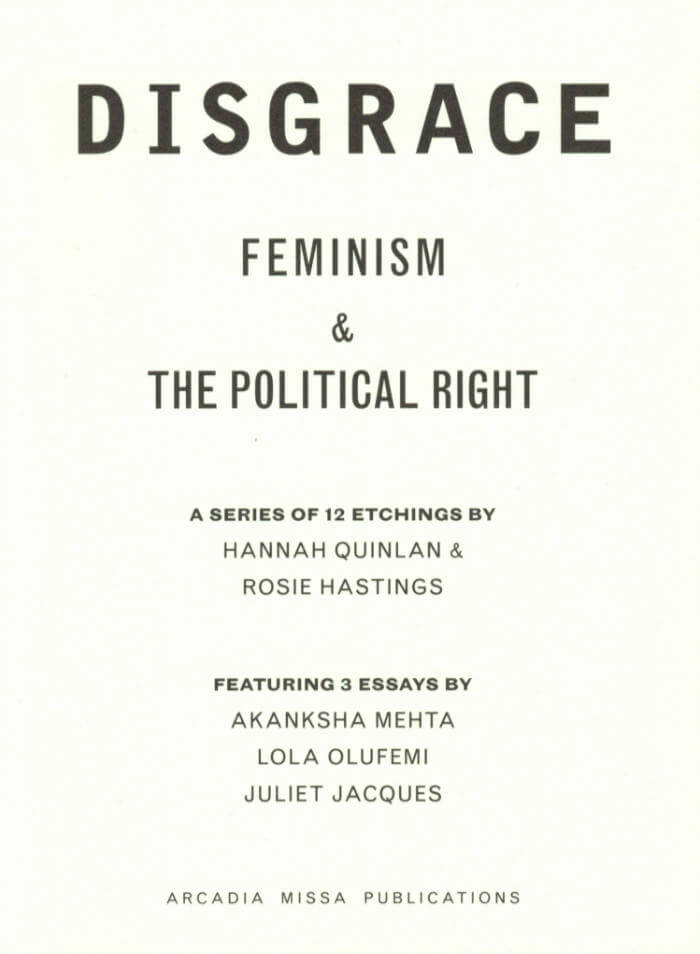
Disgrace: Feminism And The Political Right
Rosie Hastings, Hannah Quinlan
DISGRACE: Feminism and the Political Right explores the history of conservative feminism in the UK from the Edwardian period to today. Expanding on Hannah Quinlan and Rosie Hastings’ research for their eponymous exhibition, the book aims to provide contextual information for the viewer, both as a resource on the history of feminism on the political right and to provide a deeper historical and political insight into the works within the exhibition.
The book centres around a timeline created by 12 etchings, with three essays covering what the artists have identified as three significant time periods, mapping the connections between the various historical manifestations of conservative feminism that lead to the current moment. An essay by Akanksha Mehta, a lecturer in Gender, Sexuality, and Cultural Studies and the co-director of the Centre for Feminist Research at Goldsmiths, considers the nature of the women’s suffrage movement, focusing on the relationship between the suffragettes and eugenics discourse. A polemical text by Lola Olufemi, a black feminist writer and organiser with the London Feminist Library, questions the women’s liberation movement and ‘sex wars’ of the mid 20th century. In the final essay – alongside etchings exploring ‘free-market feminism’, Theresa May’s ‘Women2Win’ campaign and the proliferation of transphobic rhetoric – writer, filmmaker and journalist Juliet Jacques uses Caryl Churchill’s innovative 1982 play ‘Top Girls’ to trace the trajectory of women in power, from Thatcher into the future of feminism.
FEATURING 3 ESSAYS BY:
Akanksha Mehta
Lola Olufemi
Juliet Jacques

Entropia Vol. 1 & 2
Entropia (vol. I & II) – written by William Kherbek and edited in collaboration with Jack Clarke – is a publication which seeks to recount and re-examine a decade of artistic curation, production, and critique between London, Berlin, and other urban art centres from 2010 to 2020.
Comprised of two volumes, this publication contains a compendium of over one hundred reviews and interviews with luminaries of contemporary art (Vol I), as well as a speculative attempt to create a newly generated algorithmic art(ificial) critic (Vol II). Together they serve to document, excoriate, and theorise an art world which is simultaneously hegemonic and precarious, complicit and constructive, driven by values, yet fed by extraction, all filtered through Kherbek’s precise, aphoristic, acerbic, lens.
The publications include contextual contributions from both Josie Thaddeus-Johns, writer for the New York Times, The Financial Times, Frieze; and Rozsa Farkas, director of London-based gallery Arcadia Missa.

Being a Chair. Essays on Choreographic Poetry
Imagine words approaching a dance eyes closed or sleepwalking, words adrift beyond what can be envisioned beforehand, prompting writer and reader alike into a zone where time multiplies, where bodies grow footnotes and paper skin, savour the taste of language, attune their ears to the wavelength of blue. In a string of brief essays on her practice of writing choreographic poetry and scores, Janne-Camilla Lyster offers reflections on time, memory and the senses, on translation, punctuation and rhythm, on mistakes and crevasses, on the impossible and yet other things. What does it take to enter another form of existence, say, a chair?
Janne-Camilla Lyster is a writer, dancer and choreographer. She has published poetry, novels, essays and plays.
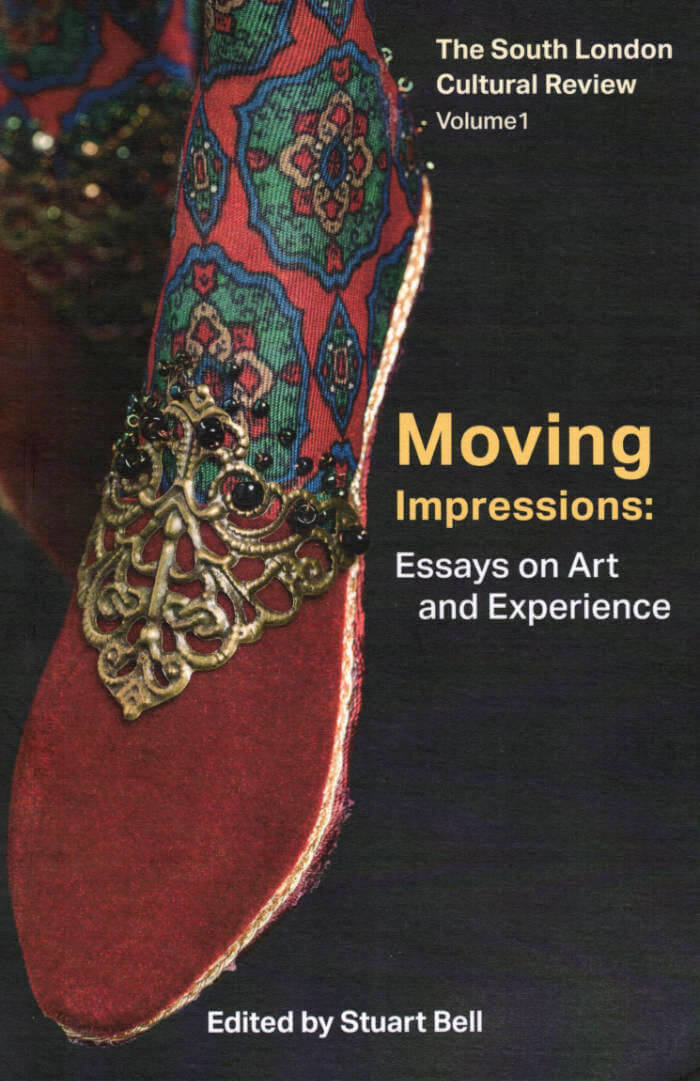
The South London Cultural Review #1: Moving Impressions
A collection of 12 essays written by academics, writers and thinkers, Moving Impressions: Essays on Art and Experience celebrates the artistic and cultural works which have inspired, and continue to inspire, this volume’s contributors as scholars, teachers, and writers. The chapters celebrate the ‘moving’ power - personal and political - of works which engage with questions of identity, race, self-and-other relations, and sexuality.
These highly personal chapters span a multitude of artists, particularly writers of colour, through exploration of their applications to neurodiversity, POC and LBGTQ+ communities, and feminism. Works explored are diverse in origin and heritage, spanning personal and political culture from South Africa to Trinidad, India to France, Nepal to The United Kingdom. These include autobiography, novels, short stories, plays, painting, sculpture, and film.
Essays by Rowland Abiodun, Stuart Bell, Amrita Dhar, Natalya Din-Kariuki, Oscar Guardiola-Rivera, Madhu Krishnan, Isabelle McNeill, Maryam Mirza, Adam Roberts, Laura Seymour, Kirsten Tambling, Emma Wilson.

Katsura Hito
This publication introduces the Katsura tree as a point of departure from which to map a rich ecology of relations and experiences with materials (recipes, exercises, and images) that accompany stories—fictional and “factual”—of a multi-sensorial experience of the fall season.
The writing questions modern/colonial binaries like east and west, nature and culture, fact and fiction, higher and lower senses, and the human and non-human. It calls readers to not only exercise awareness of their environments but to imagine along with them.
The Katsura tree is an elemental spirit of the Japanese landscape in the fall season. As the transformation of the Katsura’s colored leaves and their enchanting sweet scent changes the sensorial experience of their environment, they remind us of our connection to the seasons. The tree’s embeddedness in Japanese folklore and traditional storytelling leads us to a yokai supernatural spirit, legend, and gardener: Katsura-Otoko, or, in Chinese; Wu Gang. His efforts in pruning the Katsura tree on the moon to cause lunar cycles connects cosmology to ecology as a natural part of our earthly existence. The story’s premise serves as an inspiration and starting point for this book.

Space Crone
Ursula K. Le Guin witnessed and contributed to many of the twentieth century’s rebellions and upheavals, including women’s liberation, the Civil Rights movement and US anti-war and environmental activism.
Spanning fifty years of her life and work, Space Crone brings together Le Guin’s writings on feminism and gender for the first time, offering new insights into her imaginative, multispecies feminist consciousness: from its roots in deep ecology and philosophies of non-violence to her self-education about racism and her writing on motherhood and ageing.
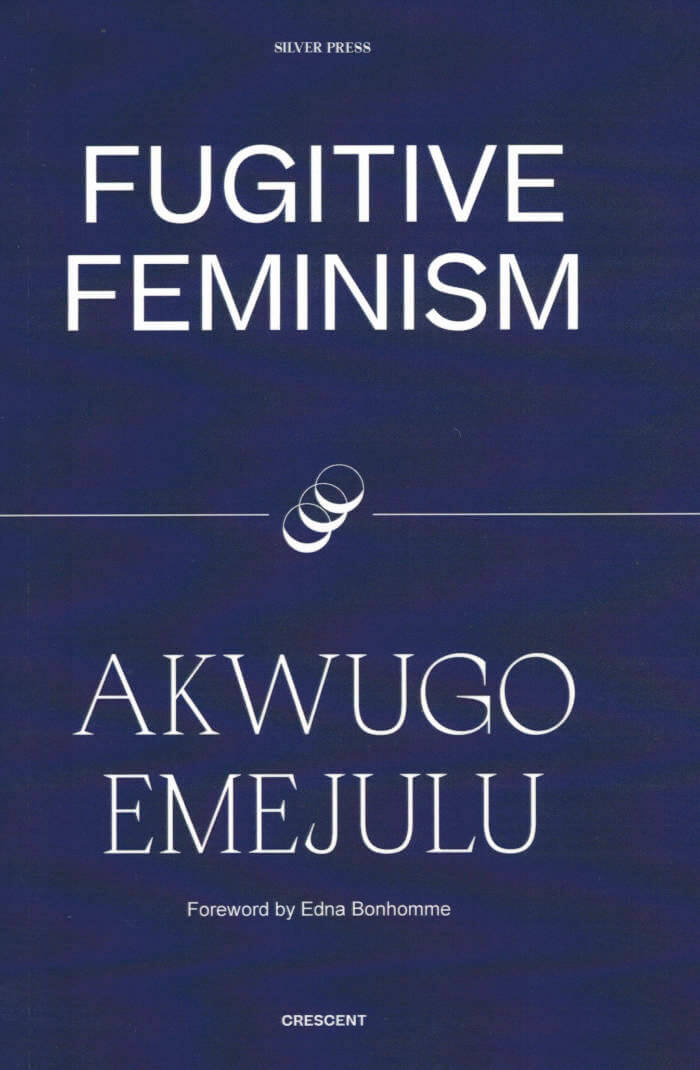
Fugitive Feminism
Humanity has always excluded Others on the basis of race and gender. What happens to people who choose to flee, following in the footsteps of those who resisted enslavement?
This audacious manifesto draws on the legacies of bell hooks, Audre Lorde, Angela Davis and others to consider the ways in which Black women have been excluded from, struggled to achieve and opted to reject the category of ‘human’. Sociologist Akwugo Emejulu argues that it is only through embracing the status of the ‘fugitive’ that Black women can determine their own liberation. Fugitive Feminism is a call for the collective process of speculative dialogue and a bold new model for action.
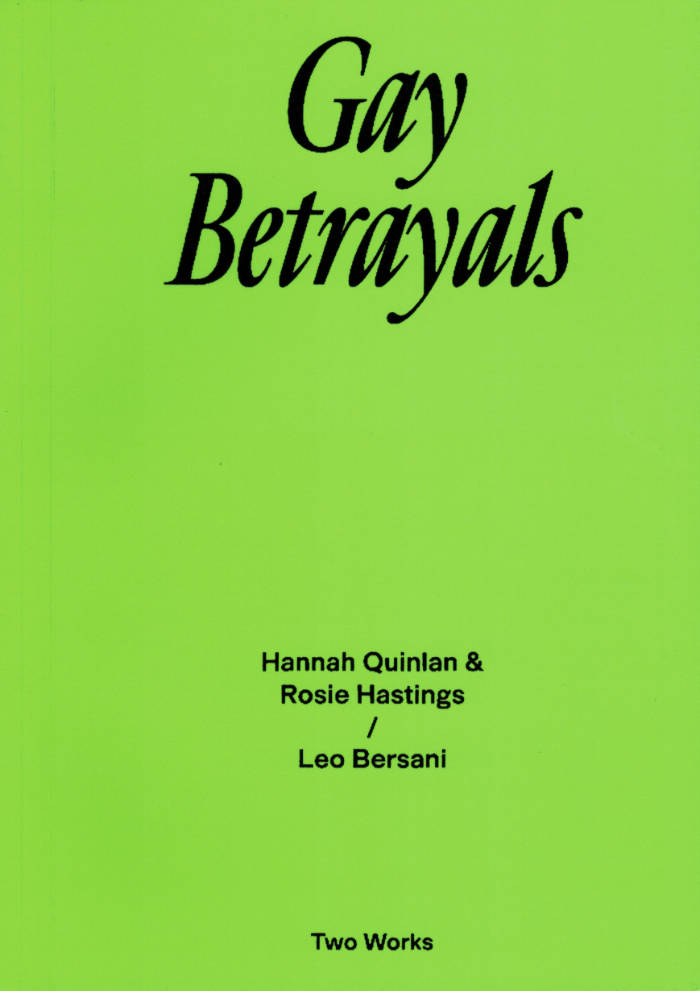
Gay Betrayals: Two Works Series Vol. 5
Leo Bersani, Hannah Quinlan and 1 more
Bersani’s prescient and long unavailable polemic against gay assimilation, a plea for “antimonogamous promiscuity,” illustrated with artistic interventions
In 1997, during a symposium at Centre Pompidou, pioneering queer theorist Leo Bersani presented a prescient critique of the assimilative tendencies that made “gays melt into the very culture they like to think of themselves as undermining.” For Bersani, queer activism, mired in micropolitics, had relinquished the radical task of reconfiguring the horizon of the possible. Later published as “Gay Betrayals” in the pioneering (and now unavailable) collection Is the Rectum a Grave?, Bersani’s intervention champions a truly disruptive vision of homosexuality, one that betrays the relational, identitarian and communitarian foundations of bourgeois heterosexual respectability through “antimonogamous promiscuity.”
Building on artistic research into the politics of queer spaces and culture some 20 years later, British artist duo Hannah Quinlan and Rosie Hastings revisit Bersani’s polemic with a response in three acts. Through a kaleidoscopic array of drawings, preparatory sketches and egg tempera paintings, a narrative of everyday (homo)sociality emerges.
Leo Bersani (1931–2022) was an American theorist best known for his books Is the Rectum a Grave?, Homos and Receptive Bodies. Born in the Bronx, he graduated from Harvard in 1952 and eventually joined the University of California, Berkeley, where he became an influential teacher, remaining there for the rest of his career.
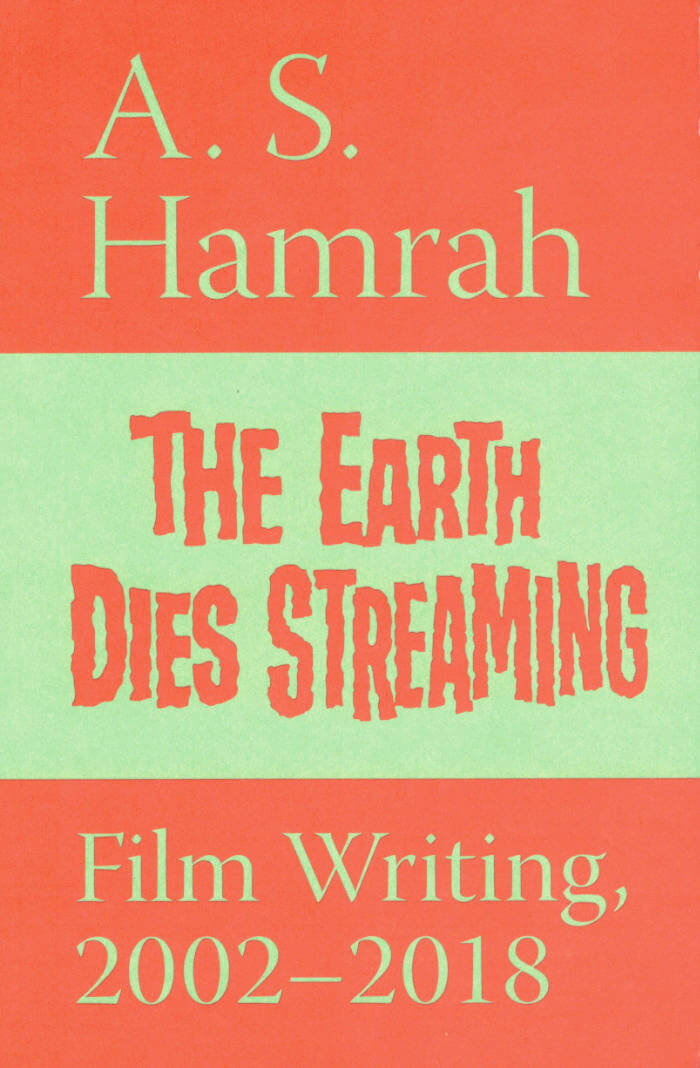
The Earth Dies Streaming: Film Writing, 2002-2018
The Earth Dies Streaming collects the best of A. S. Hamrah's film writing for n+1, The Baffler, Bookforum, Harper's, and other publications. Acerbic, insightful, hilarious, and damning, Hamrah's aphoristic capsule reviews and lucid career retrospectives of filmmakers and critics have taken up the mantle of serious American film criticism pioneered by James Agee, Robert Warshow, and Pauline Kael and carried it into the 21st century.
Taken together, these reviews and essays represent some of the best film criticism in the English language. The Earth Dies Streaming showcases a remarkable critical intelligence while offering a cultural history of the cinema of our times.

The Narco-Imaginary: Essays Under the Influence
Written according to its own dictum, "language is the universal inebriant," these epistolary essays, personal narratives, meditations on avant-garde writers, and unorthodox forays into the "narco-imaginary"—the habits and conventions surrounding literary and cultural representations of drug use—attend to the residue of transient impressions that remain, long after the delirium of creative activity subsides.
Ramsey Scott teaches at Brooklyn College, CUNY. His essays, poems, and fiction have appeared in various print and online publications, including the Southwest Review, the Seneca Review, The Massachusetts Review, Shampoo, Tarpaulin Sky, Confrontation, and Mirage #4/Period(ical). The Narco-Imaginary is his first book.

Hatred of Translation
Hatred of Translation thinks through translation with an emphasis on its disaggregation. These pieces address, sometimes obliquely, often with effrontery, the works of René Char, Hervé Guibert, Hilda Hilst, Danielle Collobert, Frankétienne, Mizoguchi Kenji, Ingeborg Bachmann, Kobayashi Masaki, and Marguerite Duras. Resolutely resistant to anything resembling a theory of a thing, these pieces provoke a persistent commitment to thinking in the place of theorizing. Where the French pensée means both of aphoristic thought and of the pansy, Hatred of Translation seeks a garden in the midst of body such as it is occupied by language.
Nathanaël is the author of more than a score of books written in English or in French, including Pasolini's Our (2018), Feder (2016); L'heure limicole (2016) and Sisyphus, Outdone. Theatres of the Catastrophal (2012). The French-language notebooks (2007-2010), gathered together in N'existe (2017), were recast in English as The Middle Notebookes (2015), which received the inaugural Publishing Triangle Award for Trans and Gender-Variant Literature. The 2009 essay of correspondence, Absence Where As (Claude Cahun and the Unopened Book) was first published in French as L'absence au lieu (2007). Nathanaël's work has been translated into Basque, Greek, Slovene, and Spanish (Mexico), with book-length publications in Bulgarian and Portuguese (Brazil). The recipient of the Prix Alain-Grandbois for ...s'arrête? Je (2008), Nathanaël has translated works by Catherine Mavrikakis, Frédérique Guétat-Liviani, and Hilda Hilst (the latter in collaboration with Rachel Gontijo Araújo). Nathanaël's translation of Murder by Danielle Collobert was a finalist for a Best Translated Book Award in 2014. Her translation of The Mausoleum of Lovers by Hervé Guibert was recognized by fellowships from the PEN American
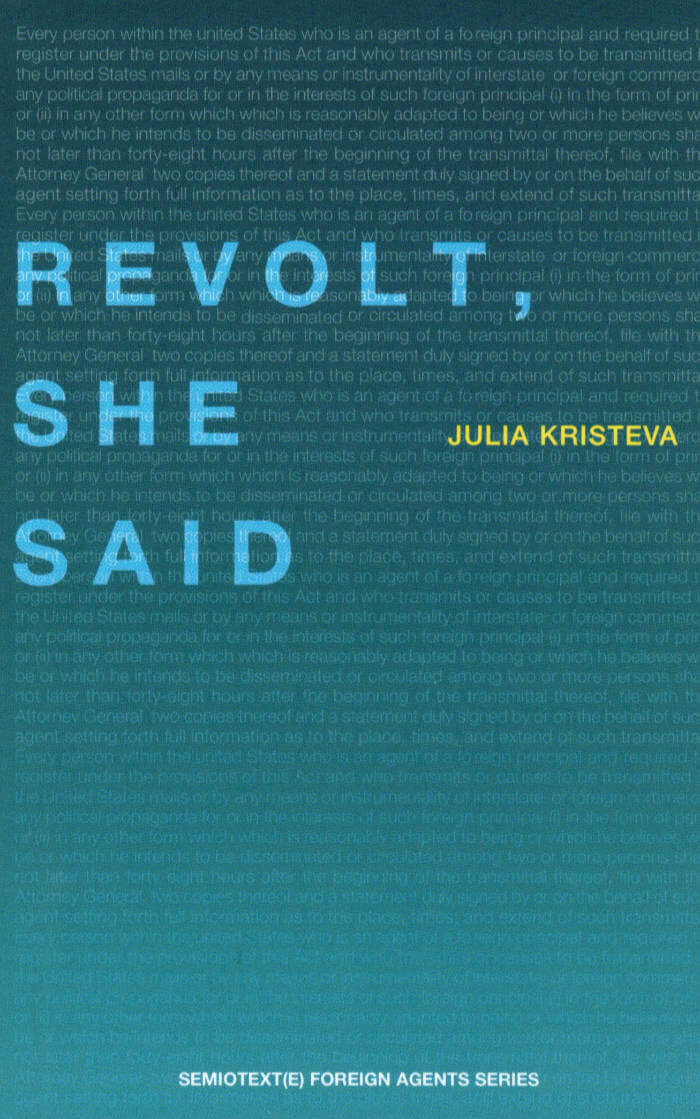
Revolt, She Said
"May '68 in France expressed a fundamental version of freedom: not freedom to succeed, but freedom to revolt. Political revolutions ultimately betray revolt because they cease to question themselves. Revolt, as I understand it—psychic revolt, analytic revolt, artistic revolt—refers to a permanent state of questioning, of transformations, an endless probing of appearances. In this book, Julia Kristeva extends the definition of revolt beyond politics per se. Kristeva sees revolt as a state of permanent questioning and transformation, of change that characterizes psychic life and, in the best cases, art. For her, revolt is not simply about rejection and destruction—it is a necessary process of renewal and regeneration."
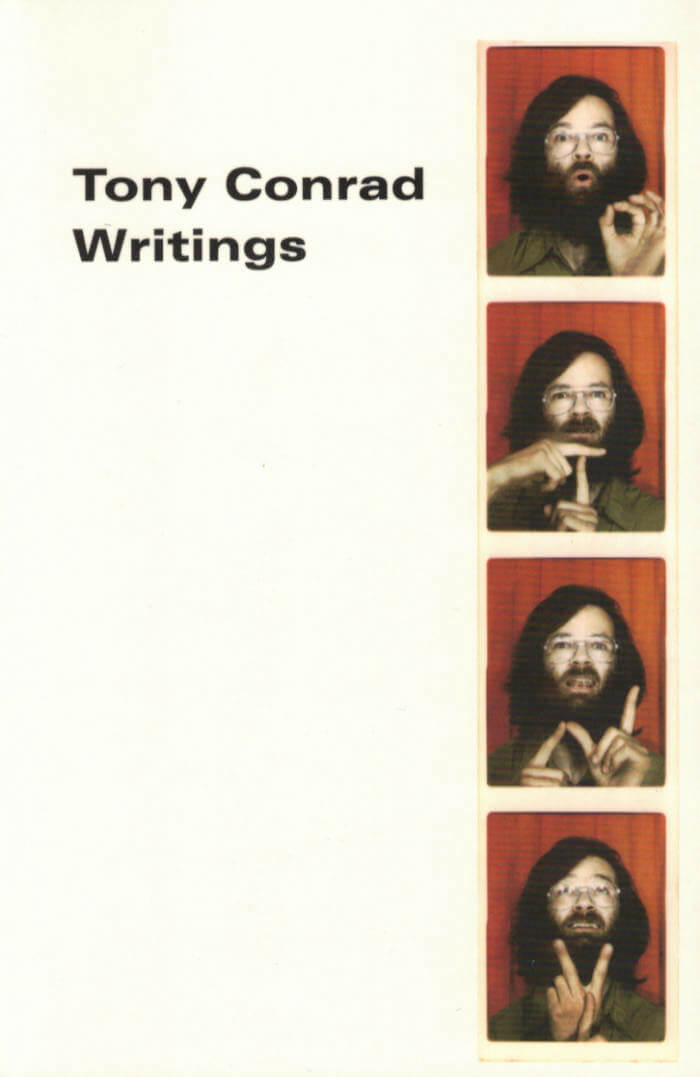
Tony Conrad: Writings
Essential writings from the downtown New York legend and polymath, pioneer of both structural film and drone music.
Tony Conrad (1940-2016) was a legendary multidisciplinary artist known for his groundbreaking contributions in experimental film, music, and video. Upon moving to New York City in 1962, he began making music with John Cale, La Monte Young and Marian Zazeela in the Theatre of Eternal Music, a group that helped shape what would come to be known as minimalist music. He later went on to perform with Lou Reed in a pre-Velvet Underground band called The Primitives and cut a classic 1972 record with the German Krautrock band Faust that set a new standard for drone music.